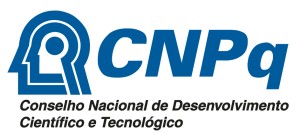Eliminating white spots
a disassembly of Curt Nimuendajú's indigenist cartography
DOI:
https://doi.org/10.15848/hh.v14i37.1686Keywords:
Cartography, Ethnography, RhetoricAbstract
This article reflects on the construction of Curt Nimuendajú's “Ethno-historical map”, an exhaustive work that sought to map the native groups of South America. This map was one of the most widely-used representations by researchers since its creation in 1944. The theoretical framework adopted in this paper stresses maps as rhetorical constructs that should be read as texts. The article also discusses the limits and possibilities of a visual vocabulary to understand explicit and implicit theoretical and methodological decisions in cartography. Digital cartography will be employed to bring out the differences between what the author of the project intended and what was presented in the "Ethno-historical map". The text starts with a description of the work and its most evident options, showing a relative selectivity in Nimuendajú's choices. In the last part, technical procedures will be abandoned to interpret the results considering the new critical cartography and ethnogeography positions.
Downloads
References
BARBOSA, Rodolpho Pinto. A cartografia do mapa Etno-histórico de Curt Nimuendajú. In: IBGE/Fundação Pró-memória. Mapa Etno-histórico de Curt Nimuendajú. Rio de Janeiro: IBGE, 1981. p. 23–27.
BARCELOS, Artur Henrique Franco. A cartografia indígena no Rio da Prata colonial. In: ENCONTRO ESTADUAL DE HISTÓRIA. O BRASIL NO SUL: CRUZANDO FRONTEIRAS ENTRE O REGIONAL E O NACIONAL, X, 2010, Santa Maria. Anais [...]. Santa Maria: UFSM/UNIFRA, 2010.
CARDOSO, Thiago Mota. Malhas cartográficas: técnicas, conhecimento e cosmopolítica do ato de mapear territórios indígenas. In: REUNIÃO DE ANTROPOLOGIA DA CIÊNCIA E TECNOLOGIA. Anais [...]. Campinas: UNICAMP, 2014, p. 1-28.
CHAPIN, Mac; LAMB, Zachary; THRELKELD, Bill. Mapping indigenous lands. Annual Review of Anthropology, Palo Alto, v. 34, p. 619–638, 2005.
DIENER, P. Martius e as línguas indígenas do Brasil. Revista Brasileira de Linguística Antropológica, Brasília, v. 6, n. 2, p. 353-376, ago. 2014.
EMMERICH, Charlotte; LEITE, Yonne. A ortografia dos nomes tribais no mapa etnohistórico de Curt Nimuendajú. In: IBGE/Fundação Pró-memória. Mapa Etno-histórico de Curt Nimuendajú. Rio de Janeiro: IBGE, 1981. p. 29-35.
FIGUEIREDO, Aldrin Moura de. O índio como metáfora: política, modernismo e historiografia na Amazônia nas primeiras décadas do século XX. Projeto História: Revista do Programa de Estudos Pós-Graduados de História, v. 41, p. 315-336, ago./dez. 2010.
FRITZ, Samuel. Mapa Geographica del Río Marañón o Amazonas. Biblioteca Nacional. ARC.030,02,017 - Cartografia, 1691.
GRUZINSKI, Serge. La colonización de lo imaginario: Sociedades indígenas y occidentalización en el México Español S.XVI-XVIII. Fondo de Cultura Económica, México D.F., 1991
HARLEY, John Brian. Deconstructing the map. Cartographica: The International Journal for Geographic Information and Geovisualization, Toronto, v. 26, n. 2, p. 1–20, 1989.
HARLEY, John Brian. Rereading the maps of the Columbian encounter. Annals of the Association of American Geographers, Washington, v. 82, n. 3, p. 522-542, 1992.
HARLEY, John Brian. The new nature of maps: essays in the history of cartography. Baltimore: JHU Press, 2002.
HERLIHY, Peter H, KNAPP, Gregory. Maps of, by, and for the peoples of Latin America. Human Organization, Oklahoma City, v. 62, n. 4, p. 303–314, 2003.
INGOLD, Tim. Lines: a brief history. Routledge, 2007.
Krause, Fritz. In den wildnissen Brasiliens: bericht und ergebnisse der Leipziger Araguary-expedition, 1908. Leipzig: R. Voigtländer, 1911.
LARAIA, Roque. A morte e as mortes de Curt Nimuendajú. Série Antropológica, Brasília, n. 64, p. 01-09, 1988.
LOWIE, Robert Harry. Eastern Brazil: an introduction. Handbook of South American Indians: The Marginal tribes, Washington, v. 143, p. 381, 1946.
MACKENZIE, Kierin; SIABATO, Willington; REITSMA, Femke; CLARAMUNT, Christophe. Spatio-temporal Visualisation and Data Exploration of Traditional Ecological Knowledge/Indigenous Knowledge. Conservation & Society, New Delhi v. 15, n. 1, p. 41-58, 2017.
MAPP, Paul W. The Elusive West and the Contest for Empire, 1713 – 1763. Chapel Hill: University of North Carolina Press, 2011.
MARTIUS, Karl Friedrich Philipp von. Beiträge zur Ethnographie und Sprachenkunde Amerika’s zumal Brasiliens: Wörtersammlung brasilianischer Sprachen. vol. 2. F. Fleischer, 1867.
MUNDY, Barbara E. The Mapping of New Spain: Indigenous Cartography and the Maps of the Relacíones Geográfícas. Chicago: The University of Chicago Press, 1996.
NIMUENDAJÚ, Curt & R. F. Mansur Guérios. Cartas etnolingüísticas. Revista do Museu Paulista, São Paulo, n. 2, p. 207-241, 1948.
NIMUENDAJÚ, Curt. Mapa Etno-histórico. Rio de Janeiro: IBGE, 1981.
NORONHA, José Monteiro de. Roteiro da viagem da cidade do Pará até as últimas colônias do sertão da província (1768), Vol. 1, EdUSP, 2006.
PERKINS, Chris. Cartography: Mapping Theory. Progress in Human Geography, London, v. 27, n. 3, p. 341–351, 2003.
POMPA, Cristina. Religião como tradução: missionários, Tupi e Tapuia no Brasil colonial. São Paulo: EDUSC/ANPOCS, 2003.
RAMALHO, João Pedro Galvão; RENDEIRO NETO, Manoel. Quando o roteiro é mais que o caminho: espacializando a narrativa de viagem do Vigário Noronha. In: VILA, Carlos Valencia; GIL, Tiago Luís (org.). O retorno dos mapas: sistemas de informação geográfica em história. Porto Alegre: Ladeira Livros, 2016. p. 165–198
RUNDSTROM, Robert A. GIS, indigenous peoples, and epistemological diversity. Cartography and geographic information systems, Bethesda v. 22, n. 1, p. 45–57, 1995.
SAFIER, Neil. Measuring the New World: Enlightenment Science and South America. Chicago: University of Chicago Press, 2008.
SOUSA, Gabriel Soares de. Tratado descriptivo do Brazil em 1587. Rio de Janeiro: Typographia Universal de Laemmert, 1851.
SOUTHEY, Robert. History of Brazil. Longman, 1819. 3 v.
SPIX, Johann Baptist von; MARTIUS, Carl Friedrich Philipp von. Viagem pelo Brasil: 1817-1820. Tradução de Lúcia Furquim Lahmeyer; Belo Horizonte: Editora Itatiaia; São Paulo: Editora da Universidade de São Paulo, 1981. v. 3.
TAPIA, Roberto Chauca. Sobre letrados chinos y bogas amazónicas: La participación indígena en la producción del conocimiento cartográfico y geográfico jesuita en Asia y América. Revista de Historia y Geografía, Santiago, n. 34, p. 19–41, 2016.
VON IHERING, Hermann. A questão dos índios no Brasil. Revista do Museu Paulista, São Paulo, v. 8, p. 112-140, 1911.
WELPER, Elena. Curt Unckel Nimuendajú: um capítulo alemão na tradição etnográfica brasileira. 2002. Dissertação (Mestrado em Antropologia Social) - Programa de Pós-Graduação em Antropologia Social, Universidade Federal do Rio de Janeiro; Museu Nacional, Rio de Janeiro, 2002.
WELPER, Elena. Da vida heroica ao diário erótico: sobre as mortes de Curt Nimuendajú. Mana, Rio de Janeiro, v. 22, n. 2, p.551-586, maio/ago. 2016.
Downloads
Published
How to Cite
Issue
Section
License
Copyright (c) 2021 Lana Moraes, Carlos Carvalho, Manoel Rendeiro, Tiago Gil

This work is licensed under a Creative Commons Attribution 4.0 International License.
Authors hold the copyrights to the manuscripts submitted. História da Historiografia: International Journal for Theory and History of Historiography is authorized to publish the aforementioned text. Authors are solely responsible for data, concepts and opinions presented in the papers, along with the accuracy of document and bibliographical references.

This work is licensed under a Creative Commons Attribution 4.0 International License.


















